 |
Home | Search | Browse | About IPO | Staff | Links |
 |
Home | Search | Browse | About IPO | Staff | Links |
Because of Upton Sinclair's The Jungle, nearly everyone knows that meatpacking was a central part of Illinois' economy and history. In fact, studying the meatpacking industry is one of the most useful prisms through which students can understand American industrial evolution and its impacts, including the history of workers and the labor movement. Illinois' role in meatpacking demonstrates the importance of agro-industrial expansion in the state, the region, and the nation. The industry capitalized on the growth of livestock farming in the Midwest, and it became one of the engines of the commercial and marketing expansion in the state and contributed centrally to American economic development. In turn, meatpacking significantly influenced the Midwest's demographics and standards of living. As The Jungle makes vividly clear, meatpacking also took a toll on its workers' lives in many ways. Nevertheless, workers struggled to improve their conditions, primarily through the formation of labor unions.
The Civil War disrupted this pattern. Growth of the nation's railways then helped to shift the industry to Chicago. The opening of the Union Stockyards in 1865, just south of Chicago proper in the town of Lake, signaled the city's preeminence in meatpacking. The settlement of the newer parts of the Midwest, including Illinois, Wisconsin, Minnesota, and Iowa along with the eastern fringes of the Great Plains, including the Dakotas, Nebraska, and Kansas, and the subsequent extinction of the bison and replacement with cattle, hogs, and sheep was necessary for the city's growth as a meatpacking center in the late-nineteenth century. During this period, the Midwest's agricultural base shifted away from open range livestock grazing to mixed-crop- especially com-and livestock production. Construction of the Union Stockyards centralized packing operations in Chicago and quickly led to large-scale animal slaughter. In 1878-1879, both the Anglo-American Packing and Provision and Armour companies packed nearly one million hogs in their Chicago plants. The scale of this activity required the development and implementation of several industrial innovations. Packers needed to store river and lake ice cut during the winter months year round. Doing so allowed them to pack during the summer months as well as the winter. To sell their meat products in eastern markets, Chicago's packers invested heavily in railroad livestock cars and holding facilities. In turn, the railroads invested large amounts of capital in stockyards and stockcars for the livestock trade. Chicago's Gustavus Swift developed the first successful fleet of refrigerated rail cars designed for the dressed beef trade. Armour 36
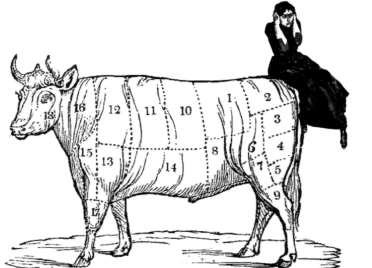 37 of the Yards Neighborhood Council, an organization formed in 1939 to help organize and promote the mutual progress of the diverse groups of people who lived around the stockyards. As readers of The Jungle know, representatives from virtually every ethnic group found employment in Chicago's stockyard district throughout the industry's history. Before 1900 German and Irish immigrants tended to dominate meatpacking's ranks, especially among the more skilled segments of the workforce. Bohemians started entering the industry's ranks after 1880. After the turn of the century, especially among the common laborers that made up at least two-thirds of the workforce, Poles especially became prominent, followed by Slovaks and Lithuanians. Historian Rick Halpern estimates that by 1920, one-half of Packingtown was Polish and two-thirds of the neighborhood's residents came from East Europe. Blacks from the Deep South started to find employment in the stockyards district after 1900 and really jumped in numbers during World War I. Finally, Mexicans started to arrive during the early 1920s.
Meatpacking became a remarkable source of opportunity for its workers, especially African Americans, during and immediately following World War II. In Chicago, blacks made up more than 50 percent of UPWA membership by war's end, and this proportion was almost as high in East St. Louis. In contrast to blacks' experiences in most other unions, including ClO-affiliated ones, the UPWA was much more egalitarian. Black women as well as black men benefited from the UPWA's civil rights commitments. The UPWA was committed to equal pay for equal work, and black women throughout the industry experienced significant breakthroughs in workplace opportunities and pay during the 1950s. Black women even started to assume leadership positions within the union. 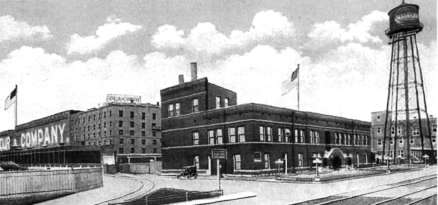 Unfortunately for meatpacking workers in Illinois, however, the industry's evolution after World War II caused it to move increasingly away from plants centered on stockyards to more decentralized facilities closer to livestock. Instead of relying extensively on purchases of animals at centralized markets, packers, beginning especially during the 1920s, had started to buy animals for slaughter directly from farmers. Many of the independent packers started to establish plants in rural parts of the Midwest, and even the Big Four started to follow suit before World War II. After the war, packers began to abandon their stockyard-based facilities to try to meet the competition posed by new firms, especially Iowa Beef Packers (later renamed IBP, which in turn was recently purchased by Tyson). Significantly, IBP and its followers pursued strategies of union avoidance and union combat that resulted, especially during the 1980s, in making the industry into a low-wage employer. At the same time, incorporation of new technologies, such as the circular electric knives called whizards, and much faster production speeds, made possible by weakening or eliminating union regulations, have made meatpacking more injurious to its workers than at anytime since The Jungle. Meatpacking now has one of the highest injury rates of any non-agricultural industry. Because meatpacking has become both low-paid and quite dangerous, employers have pursued employment of migrant workers, especially from Mexico. In 1954 Cudahy was the first of the Big Four packers to close its plant at Chicago's Union Stockyards, and within six years most of the large plants located there had closed. 38
39
Objectives for Each Student Each student will work in a group. Examine the historical chronology of the meatpacking industry in the Midwest, and in particular Illinois. Identify issues and concerns of past migrant workers in the industry, and those of today. Evaluate the environmental impact of rural, on-site slaughterhouses and packing plants. Understand the rise, then fall, of worker's benefits in the packing plants, and future implications. Describe the changes in family farming brought on by "factory farms." Comprehend the labor issues and roles evolving between the farmer and the corporation who manages farm production. SUGGESTIONS FOR TEACHING THE LESSON Opening the Lesson Ask the students to envision their favorite foods and how often they enjoy them at home or in restaurants. Encourage a brief oral exchange to share their replies, and perhaps even tally the top choices. Chances are very good these will include hamburgers, tacos, fried chicken, and pizza. Guide the students to think of the steps and procedures that went into the production and processing of meat and poultry before it reached a grocery store or fast-food establishment. Suggest that a clean environment, safe working conditions, and healthful farming methods were not guaranteed at one time in America. Their mission will be to learn about past practices, and then research current problems and industry standards. Their research will be presented in class as four segments of a television news-magazine format, the four together creating a full report. Review with students the typical format of net-work shows such as Dateline, Primetime, or 20/20. View brief sections of one of these shows, if necessary, for clarity of the final goal. Developing the Lesson The class should read the narrative after the opening activity discussion. Middle school students may need some help with this; high school students can read independently. Students should then be divided into four equal groups for the activities that follow. Activity One: Comprehension Questions Distribute copies of Activity Sheet One to every student. The four groups may answer the questions collectively or singularly, as the teacher determines. Follow-up class discussion of the completed worksheet is advisable, and serves as a segue to the next activity. Activity Two: Each student receives a copy of Activity Two worksheet. The teacher assigns one research question to each of the four groups. The students write that assigned question onto their worksheet. The teacher should make sure the class is aware of all four research topics in order that everyone has a clear overview of the project. Allow each group time to organize and plan their research. The teacher may need to offer guidance for researching websites, newspapers, magazines, and other applicable sources. A main purpose of this lesson is to aid students in refining research skills. A partial list of websites and books is provided, but the available materials can increase almost daily. Students must understand that current references are essential; any previously prepared list may already be obsolete. Remind students to stay focused on their topic question and the information that will help them write an informative broadcast script. Four Questions for Research 1. How has the poultry/meatpacking industry reached out to create factory-farms and change the face of family farming? 40 2. Are migrant workers being exploited in the same ways as a century ago? Compare and contrast conditions. 3. How have union benefits and protections risen, then fallen, over the decades? What is the current outlook? 4. What changes to the environment have occurred due to moving slaughtering and packing houses to rural, on-site locations? What cost saving did the industry anticipate in making this move? Activity Three Students should be allowed time within their respective groups to share the research they have gathered. Organize these facts into a cohesive list from which they write their script. Self-check one another's efforts for fluency and accuracy. Students now decide who within the group will be on-camera presenters, the producer, or operate the video equipment. Whatever the role, each student must have contributed to the research, fact-checking, and script writing. Activity Four Each group gives their presentation segment in the classroom. It is also being video-taped for extension purposes and for assessment of the lesson. Concluding the Lesson After viewing the four segments that came together to create a news-magazine broadcast, allow time for student comment/reaction. Ask students to reflect on how the four segments collectively told the bigger story. Were they surprised at anything they learned? Why? Does the United States still face problems in the food production chain? How might changes in current laws correct problems? What role could unions and labor-relations boards play? In what ways do these concerns link past occurrences in United States food production with on going problems? What lessons can we learn from previous actions/solutions? Extending the Lesson The students may well believe they wish to pursue these issues further after the project. Continuation might take place in health class, home economics, or science. Teachers of those subjects may take up one aspect that fits their own curriculum objectives, that is, water and soil pollution, dangers in the workplace, or careers in food production. Economics classes could expand to researching immigrant labor issues and working conditions in other major industries. Assessing the Lesson Guided-reading worksheets and notes and scripts could be graded for accuracy. The extent of research completed by each group might be a measure of effort. Class discussions, quality of the news broadcast, and connections made by the students as they relate to the four main research topics will be the best monikers for measuring achievement. 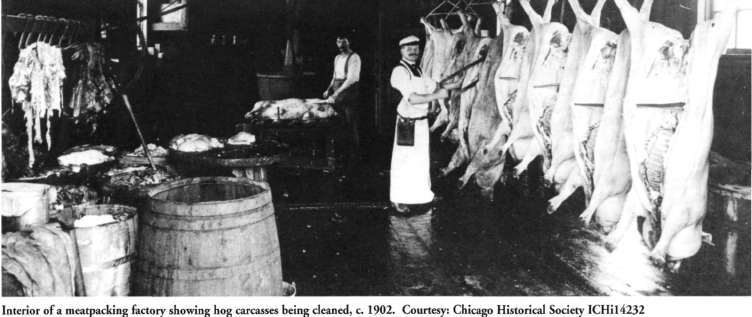 41 Activity 1 Reading Comprehension GuideAnswer the following briefly, and concisely, as a group or individually. Guided Reading Questions 1. Why was the Midwest the primary location for meatpacking in the nineteenth century? 2. What role did rivers, and later the railroads, play in the evolving meatpacking industry? How did the Civil War have an impact? 3. Take a closer look at Chicago and how it came to dominate meatpacking. Which major packers were located in the Union Stockyards? How many hogs were processed in these plants? What did packer giants Swift and Armour develop that even further improved and enlarged meatpacking? 4. Where else in Illinois did meatpacking flourish? What two prominent American business men invested in and developed this area? 5. Labor issues arose in the meatpacking plants, which in turn led to union organization. Briefly summarize the efforts of the A F of L and the CIO. 6. Which immigrants had large numbers working in meatpacking? In what ways was this industry beneficial to African Americans? 7. Like the Civil War, World War II brought profound change for the laborers in meatpacking? Bullet-point the core changes. What plants closed, causing unemployment? Which survive and where? What immigrant group dominates as workers today? 8. In some ways, meatpacking is back where it began. In what ways does it resemble the Civil War-era beginnings? In what ways does it not? 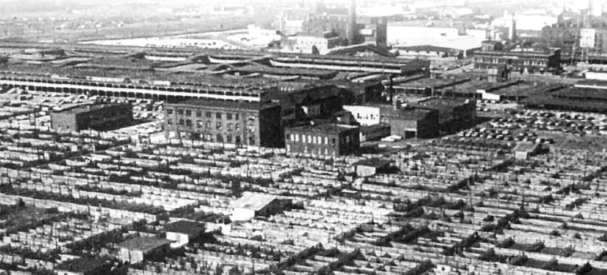 42 Activity 2 - "Just the Facts, Ma'am!"Your group is assigned a specific question to research. Use the Internet and all possible sources to prepare the information for a news-magazine broadcast. Copy the research question below: Start organizing within your group. Working in pairs, head to the World Wide Web, the library, periodicals, and any other information sources you brainstorm. Use this work sheet for taking notes and jotting further resources to check! Here are some web sites to get you started on your research: 1. www.nicwj.org/industry/general-alleg 2. www.hillboren.com/safety-alerts/poultry 3. www.sierraclub.org/factoryfarms 4. www.osha.gov/SLTC/poultryprocessing 5. www.sciencedaily.com/releases 6. www.USDA/gov/farm Here are some printed sources to get you started on your research: Azzam, Azzeddine M. "Competition in the U. S. Meatpacking Industry: Is It History?" Agricultural Economics: An International Journal Mi (1998): 107-126. Nelson, Kenneth E. "Issues and Developments in the U. S. Meatpacking Industry" (ERS Staff Report No. AGES 850502) (Washington, D. C: Economic Research Service, National Economics Division, 1985). Ruttan, Vernon W. "Technological Progress in the Meatpacking Industry, 1919-1947: An Agricultural Act of 1946 (RMA, Title II) Contract Report (January 1954) (Washington, D. C: U. S. Department of Agriculture, 1954). Stromquist, Sheldon. Unionizing the Jungles: Labor and Community in the Twentieth-Century Meatpacking Industry. (Iowa City: University of Iowa Press, 1997). 43 Activity 3 - "Time to Produce!"OK future stars. It's time to synthesize your research and organize a coherent script. Your group will be on camera for 5-8 minutes, sharing your research in the format of a television news magazine. Think of the style used by Dateline, Primetime, or 20/20, as discussed in class. Think accuracy! Everyone in the group should share their notes, and one person can begin to organize the data. Decide who will be the on-camera presenters, the producer, and the editor. Collectively write a script that will deliver your main point(s). The editor should proofread. The producer will assist with script read-through and time the presentation. If taping, the video photographer needs to be familiar with the use of equipment. When the script is ready, rehearse! You want to be confident as you deliver your information. 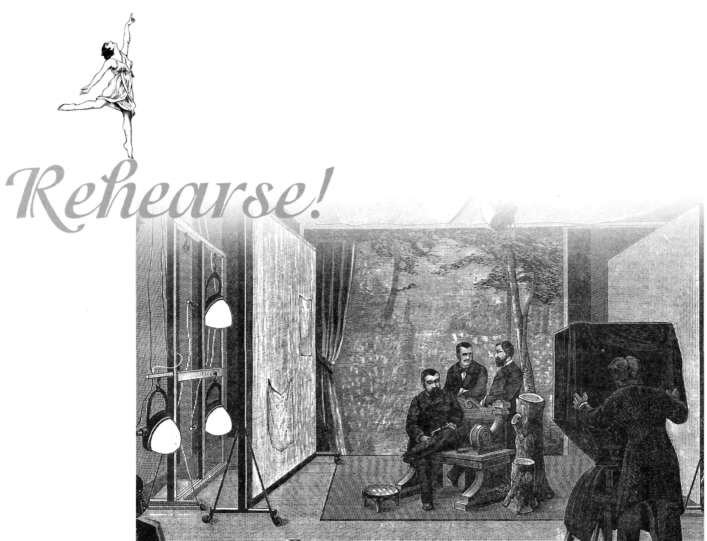 44 Activity 4 - Lights! Camera! Action!Time to stand and deliver! Use this sheet to write the vital statistics and hand it to your teacher. This will make your mission clear and facilitate the evaluation. Have a copy of finished script to give to your teacher. Take your places and let the show begin. 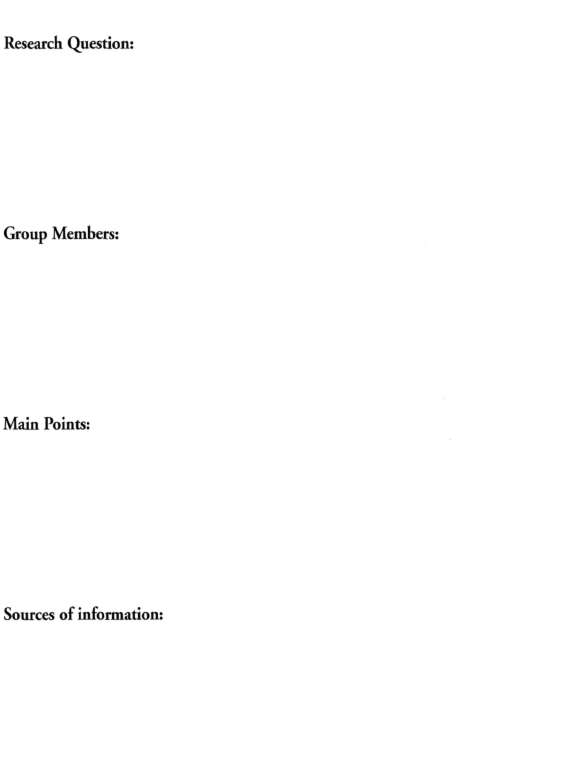 45 |
|
|